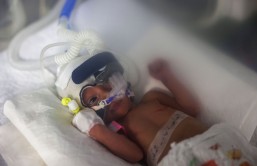Stressed mothers carry fetuses that are likelier to show signs of left-handedness while still in their wombs, according to new research.
Analysts from Lancaster and Durham universities concluded that their findings provided the link between the temporary behavior of the fetus and the mother's stress. This research also provided scientific evidence that could be useful in promoting reduced stress during pregnancy.
The research team conducted 4D ultrasound scans and came up with 57 scans of 15 fetuses. 4D scans were taken during weeks 24 and 36 of pregnancy. The mothers' stress levels were also surveyed during those weeks.
The team discovered that the more the mother felt stressed, the likelier it was that the fetus showed changes linked to left-handedness. Since most of the population was right-handed, the team expected to see more right-handed gestures from the scans. Yet, fetal touches were predominantly done with the fetus' left hand if the mother reported increased stress levels.
"This suggests maternal stress could be having on effect on the child's behavior in the womb and highlights the importance of reducing maternal stress in pregnancy," lead author Dr. Nadja Reissland from Durham's Department of Psychology said in a press release.
Similarly, Professor Brian Francis from Lancaster University explained in that the findings reflected overall preference over left or right movements, but the fetuses scanned tended to show more left-handed movements as their mothers reported experiencing stress.
"Overall, there was no consistent handedness preference being shown by the fetuses, with most fetuses switching in preference at least once over the four scans," he said in a press release.
However, the team maintained that the study did not prove that the left-handed movements persisted even after the fetuses were born. Further research is needed to identify whether the stressed experienced by the mothers during pregnancy could result in long-term effects even after birth.
Details of the study were published in the June 3 issue of Laterality: Asymmetries of Body, Brain and Cognition.








